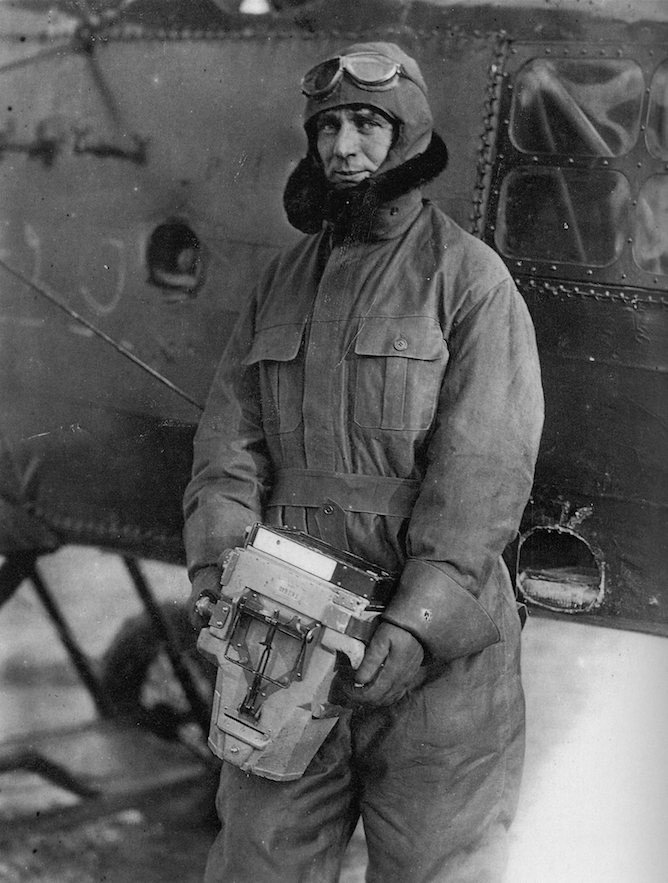In the AEF Steichen presided over training programs, darkroom operations, print distribution, and supply channels—information delivery operations that required maximum clarity and detail as well as efficiency of production. Although he likely participated in several test flights, and had learned to fly before the war, there is no evidence that Steichen took operational photographs himself during the war.
While on military duty, Steichen helped adapt aerial photography for intelligence purposes, implementing surveillance programs that had a lasting impact on modern warfare. He later reflected:
The wartime problem of making sharp, clear pictures from a vibrating, speeding airplane ten to twenty thousand feet in the air had brought me a new kind of technical interest in photography. . . . Now I wanted to know all that could be expected from photography.[1]
Steichen began to value photography’s capacity to transmit and encode information, and he soon proved himself a savvy collaborator and producer rather than a solitary auteur—new roles that enabled his subsequent groundbreaking career in magazine and advertising photography.
Following the armistice on November 11, 1918, Steichen, by then promoted to major, remained in France to direct the extensive documentation of significant battle sites. He emerged from the war demonstrating not only a greater appreciation for the “striking pictorial effects” of aerial photographs but also celebrating the camera’s capacity to convey “neither opinions nor prejudice, but indisputable facts.”[2]
In the numerous reports he authored Steichen emphasized his respect for the photograph as a picture of codes and persuasion, a concept he would later apply to mass-media images.
Figure 1. Unknown photographer. Captain Edward Steichen and Camera, Serving with the American Expeditionary Forces in France, 1918. Helga Sandburg Crile Collection.
[1] Edward Steichen, A Life in Photography (Doubleday, 1963), chap. 5, n.p.
[2] Edward Steichen, “American Aerial Photography at the Front,” The Camera: The Magazine for Photographers (July 1919), p. 359, 366.

